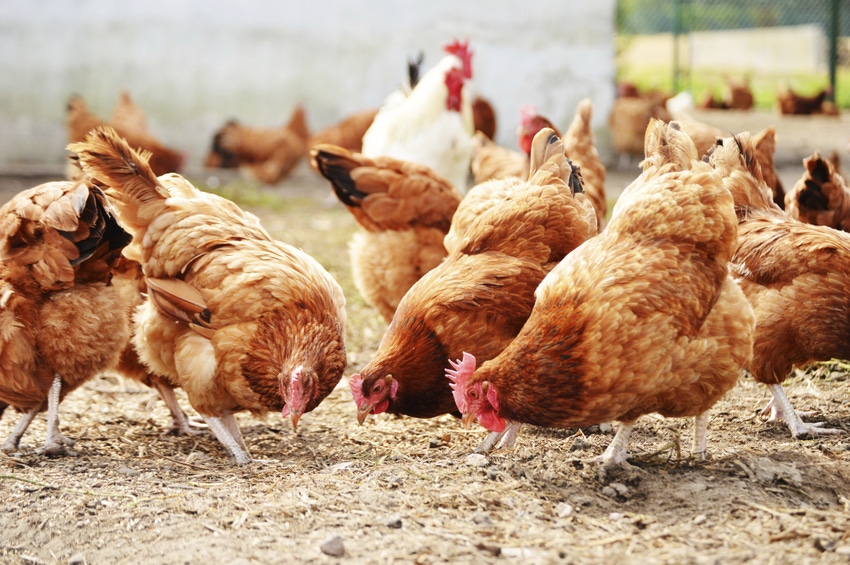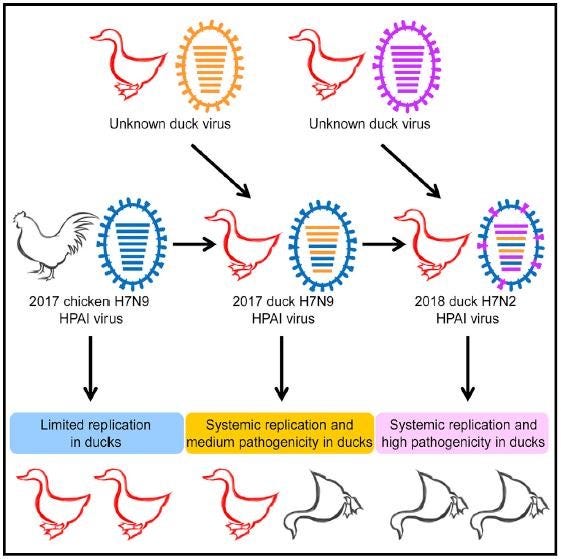Avian flu vaccination reduced H7 infections in poultry
New bird flu viruses in ducks after vaccines largely prevented H7N9 in chickens.
September 27, 2018

In response to avian influenza pandemics starting in 2013, officials in China introduced a new vaccine for chickens in September 2017, according to an announcement from Cell Press. Recent findings suggest that the vaccine largely worked but detected two new genetic variations of the H7N9 and H7N2 subtypes in unvaccinated ducks. These findings were published Sept. 27 in the journal Cell Host & Microbe.
"It surprised me that the novel, highly pathogenic subtypes had been generated in and adapted so well to ducks, because the original highly pathogenic form of H7N9 has very limited capacity to replicate in ducks," said Hualan Chen, a senior author on the paper and an animal virologist at the Harbin Veterinary Research Institute in China.
Chen's team collected more than 37,928 chickens and 15,956 duck genetic samples eight months before and five months after the vaccine's introduction. They isolated 304 H7N9 viruses before the vaccine's release and only 17 of the H7N9 viruses and one H7N2 virus after, the announcement said.
"Our data show that vaccination of chickens successfully prevented the spread of the H7N9 virus in China," Chen said. "The fact that human infection has not been detected since February 2018 indicates that consumers of poultry have also been well protected from H7N9 infection."
The avian influenza virus replicates in host cells and often mutates and reassorts over time. When Chen's team looked closely at the genetic types of the disease-causing strains in ducks, they found that an H7N2 and an H7N9 virus had picked up certain gene segments from other duck influenza viruses, improving their ability to infect ducks, the announcement said.

The image shows a graphical abstract: H7N9 highly pathogenic avian influenza viruses emerged in China in 2017, prompting vaccination in poultry. Shi et al. examine H7N9 viruses across China before and after vaccination, revealing rapid evolution into subtypes and genotypes. Although vaccination reduced infections, some H7N9 and H7N2 viruses exhibit heightened virulence and expansion to ducks.
"Influenza viruses mutate as long as they replicate, but it's very difficult to predict when the H7N9 virus will obtain a particular harmful mutation," Chen said. "It is possible that the virus may adapt in other species in the future if it cannot be eliminated soon."
China produces roughly 3 billion ducks per year, which is not to the scale of chicken production in the country. To prevent further human infection, Chen and her team believe that the virus should be eliminated in ducks as soon as possible.
"Fortunately, our study indicates that the current vaccine will work well in ducks, so we do not need to develop a new one," Chen said. "We suggest applying the H7 vaccine in ducks immediately."
This research was funded by the National Key R&D Program of China, the National Natural Science Foundation of China, the China Agriculture Research System and a U.S. National Institutes of Health CEIRS contract.
Cell Host & Microbe, published by Cell Press, is a monthly journal that publishes novel findings and translational studies related to microbes (which include bacteria, fungi, parasites and viruses). The unifying theme is the integrated study of microbes in conjunction and communication with each other, their host and the cellular environment they inhabit.
You May Also Like



